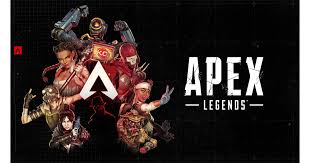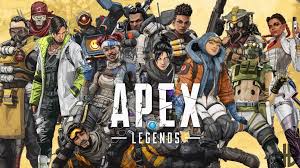Apex Legends: Revolutionizing the Battle Royale Genre

Introduction
In February 2019, the gaming world was blindsided by Apex Legends, a free-to-play battle royale that redefined competitive multiplayer overnight. Developed by Respawn Entertainment and set in the Titanfall universe, the game amassed 25 million players in its first week and became a cultural phenomenon. Combining fluid movement, character-driven gameplay, and groundbreaking social features, Apex Legends challenged giants like Fortnite and PUBG while carving its own identity. Four years later, it remains a titan of the genre, with over 100 million players and a thriving esports scene. This 3,000-word article explores Apex Legends’ meteoric rise, its innovative design, cultural impact, and the challenges it faces in an ever-evolving industry.
Chapter 1: Birth of a Legend – Development and Launch
From Titanfall’s Shadow to Battle Royale Innovation
Respawn Entertainment, known for the critically acclaimed Titanfall series, initially kept Apex Legends a secret. The studio sought to create a battle royale that emphasized teamwork and accessibility while retaining the fast-paced combat of Titanfall. However, Titans (the series’ iconic mechs) were scrapped early to focus on infantry combat. The team drew inspiration from hero shooters like Overwatch, designing distinct characters (“Legends”) with unique abilities.
The Element of Surprise
EA and Respawn opted for a no-hype launch, dropping Apex Legends without prior marketing on February 4, 2019. The strategy capitalized on streaming culture: influencers like Shroud and Ninja were invited to play the game live on Twitch, sparking instant buzz. The gamble paid off—the game hit 1 million concurrent players within 72 hours.
Post-Launch Growing Pains
Despite its success, Apex Legends faced server crashes, bugs, and accusations of being a Titanfall “cash grab.” Respawn responded with rapid updates, including Season 1’s Wild Frontier battle pass, which introduced the first new Legend, Octane.

Chapter 2: Gameplay Mechanics – The Blueprint for Modern Battle Royale
The Trinity of Combat: Movement, Guns, and Abilities
Apex Legends’ core loop revolves around three pillars:
- Movement: Slide-hopping, wall-climbing, and ziplines inherited from Titanfall create a fluid, high-skill ceiling.
- Gunplay: Tight recoil patterns and a diverse arsenal (e.g., the Peacekeeper shotgun, R-301 carbine) reward precision.
- Abilities: Legends’ tactical, passive, and ultimate skills demand strategic synergy. For example, Gibraltar’s Dome Shield enables revives, while Wraith’s Dimensional Rift flanks enemies.
Ping System: A Communication Revolution
Respawn’s ping system, allowing players to mark loot, enemies, and objectives without voice chat, became a genre standard. It fostered inclusivity, bridging language barriers and reducing toxicity.
The Evolving Arena: Maps and Modes
- Kings Canyon: The original map, a mix of tight corridors and open spaces, remains a fan favorite despite frequent changes.
- World’s Edge: Introduced in Season 3, this lava-scarred map emphasized verticality and long-range combat.
- Olympus: A floating city added in Season 7, designed for faster rotations and vehicle play (via the Trident).
- Storm Point: Season 11’s tropical map featured wildlife AI and gravity cannons.
Limited-time modes (LTMs) like Armed and Dangerous (shotguns/snipers only) and Control (9v9 zone capture) keep the meta fresh.
Chapter 3: Legends and Lore – Building a Universe
Characters with Depth
Each Legend has a rich backstory tied to the Titanfall universe:
- Wraith: A dimension-hopping scientist experimented on by the IMC.
- Bloodhound: A nonbinary technological tracker revered by their clan.
- Valkyrie: Daughter of Titanfall 2’s antagonist Viper, piloting a modified Northstar Titan jetpack.
New Legends debut every season, such as:
- Revenant (Season 4): A murderous simulacrum grappling with immortality.
- Seer (Season 10): A charismatic ambush artist with micro-drones.
- Newcastle (Season 13): A shield-bearing hero with ties to Bangalore’s past.
Narrative Integration
In-game comics, seasonal quests, and Stories from the Outlands animated shorts expand the lore. The Apex Games themselves are framed as a bloodsport orchestrated by the mysterious Syndicate, with deeper conspiracies involving the IMC and Hammond Robotics.

Chapter 4: Cultural Impact – From Twitch to Esports
Streaming and Community
Apex Legends thrived on Twitch, with streamers like ImperialHal and Aceu showcasing its high-octane gameplay. The game’s first Holo-Day Bash event (2019) drew 8 million concurrent viewers, while the Champion Edition launch in 2020 broke Twitch records.
Esports Ascension
The Apex Legends Global Series (ALGS), launched in 2020, features a $5 million annual prize pool. Teams like TSM and NRG dominate, with strategies revolving around zone control and Legend comps. The 2022 ALGS Championship peaked at 600,000 viewers, cementing Apex as an esports staple.
Crossovers and Collaborations
- Post Malone (2023): A celebrity tournament raised $1 million for charity.
- Respawn’s Jedi: Survivor (2023): Lightsaber melee weapons and Star Wars-themed cosmetics.
- Final Fantasy VII Rebirth (2024): Leaked Buster Sword heirloom for Lifeline.

Chapter 5: Challenges and Controversies
Technical Struggles
Server instability, audio bugs, and cheating have plagued Apex since launch. The 2021 “Tap-Strafing” controversy (a movement tech removed for balance) divided the community.
Monetization Debate
While free-to-play, Apex monetizes via:
- Battle Passes: 1,000 Apex Coins ($10) for 100+ tiers of cosmetics.
- Heirlooms: $500+ melee weapon skins with rare drop rates.
- Collection Events: $160+ for thematic skins, criticized as predatory.
Balancing Act
Power creep (e.g., Season 12’s overpowered Mad Maggie) and stale metas often frustrate players. Respawn’s “legends team” works tirelessly to tweak abilities, but fan favorites like Pathfinder and Lifeline have yo-yoed between overpowered and underpowered.
Chapter 6: The Future of Apex Legends
Expanding the Universe
Respawn plans to deepen ties to Titanfall, with rumors of a Titan-based LTM. Spin-off games, like the canceled Apex Legends Mobile, suggest the IP’s potential beyond battle royale.
Technological Innovations
- Cross-Progression: Long-requested feature finally rolling out in 2024.
- AI-Powered Bots: Improved training modes for new players.
- UE5 Engine Upgrade: Possible visual overhaul for Apex Legends 2.
Community-Driven Evolution
Respawn’s transparency with patch notes and AMAs (Ask Me Anything) fosters trust. Fan-designed cosmetics, like the “Sunfire Scarab” Wraith skin, highlight the team’s collaboration with players.
Conclusion
Apex Legends is more than a game—it’s a testament to Respawn’s ability to innovate under pressure. By blending tight gunplay, dynamic movement, and character-driven storytelling, it has outlived countless competitors while nurturing a passionate community. As it enters its fifth year, Apex Legends faces fierce competition from Warzone 2 and Fortnite, but its commitment to evolution suggests a legacy far from over. In the words of Respawn’s director Steven Ferreira: “We’re just getting started. The Outlands have endless stories to tell.”


